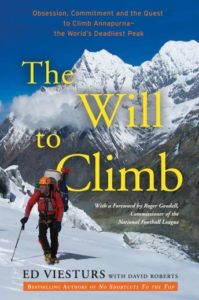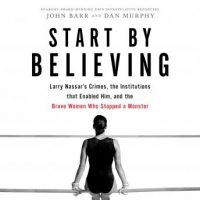The Will to Climb: Obsession and Commitment and the Quest to Climb Annapurna–the World’s Deadliest Peak Audiobook (Free)
- Fred Sanders
- 10 h 42 min
- Random House (Audio)
- 2011-10-04
Summary:
The bestselling writer of No Shortcuts to the Top and K2 chronicles his three attempts to climb the world’s tenth-highest and statistically deadliest peak, Annapurna in the Himalaya, while exploring the dramatic and tragic history of others who have made — or attempted – the ascent, and what these exploits teach us about facing life’s greatest challenges.
As a high school pupil in the flatlands of Rockford, Illinois, where about The Will to Climb: Obsession and Commitment and the Mission to Climb Annapurna–the World’s Deadliest Maximum the highest objects on the horizon were water towers, Ed Viesturs browse and was captivated by the French climber Maurice Herzog’s well-known and grisly account of the first ascent of Annapurna in 1950. When he began his own campaign to climb the world’s 14 highest peaks in the past due 1980s, Viesturs looked forward with trepidation to starting Annapurna himself. Two failures to summit in 2000 and 2002 produced Annapurna his nemesis. His successful 2005 ascent was the triumphant capstone of his climbing pursuit. In The Will To Climb Viesturs brings the extraordinary difficulties of Annapurna to stunning lifestyle through edge-of-your-seat accounts of the greatest climbs in the mountain’s history, and of his very own failed attempts and eventual achievement. In the process he ponders what Annapurna reveals about some of our most fundamental moral and religious questions–questions, he believe, that we need to answer to business lead our lives well.
‘Of all fourteen from the world’s highest mountains, that i climbed between 1989 and 2005,’ writes Viesturs, ‘the one which emerged the closest to defeating my best attempts was Annapurna.” Although it was the initial 8,000-meter top to become climbed, Annapurna is not as well referred to as the world’s highest mountain, Everest, or second highest, K2. But simply because Viesturs argues, Annapurna, without technically the most challenging of the 8,000ers, is the most daunting because it has no route–no ridge or encounter on any aspect from the mountain–that can be relatively free of what climbers contact ‘objective danger’-the risk of avalanches, above all, but also of collapsing seracs (huge ice blocks), dropping rocks, and crevasses. Since its initial ascent in 1950, Annapurna has been climbed by a lot more than 130 people, but 53 have died trying. This high fatality price makes Annapurna probably the most harmful from the 8,000-meter peaks.
Viesturs and co-author David Roberts chronicle Ed’s 3 efforts to climb Annapurna, as well as the efforts of others, from both French climbers who made the landmark first ascent of Annapurna on June 3, 1950, through the daring and tragic promotions of such world-class mountaineers as Reinhold Messner and Anatoli Boukreev. Viesturs’s accounts and analyses of the extraordinary adventures provide as a point of departure for his exploration of styles vividly illustrated by Annapurna expeditions, including obsession and commitment, fear and fulfillment, failure and triumph–issues that have been neglected in the in any other case very rich books of mountaineering, and that may inform the lives and actions of everyone.
Related audiobooks:







